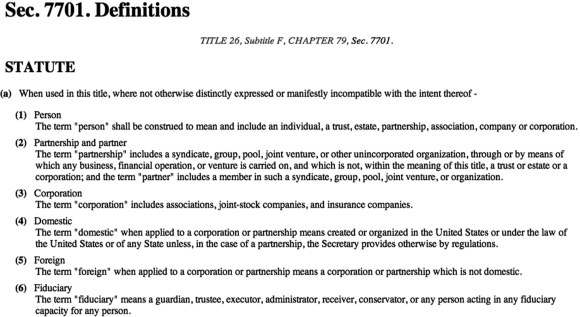The Internal Revenue Code
Realize that the Code, or the IRC, is the common name for the Internal Revenue Code of 1986 as Amended. The Code compiles most tax statutes passed by Congress. It is located in Title 26 of the United States Code. To cite a specific tax provision, tax researchers use the Code section number followed by specific provisions within that Code section. For example, cite “IRC § 61(a)(1)” as the authority for salary as gross income.
Use the Find by Citation approach in a tax research database as the fastest way to pull up a Code section. On the left side of the screen is the link to using the citation in Checkpoint. The citation approach usually provides a template box to assist the researcher in pulling up the desired Code section or other authority.
Cite a provision within a Code section with as much precision as possible. Drill into the subsections, paragraphs, subparagraphs, and clauses, when possible. Within parentheses following the Code section number, subsections use lowercase letters, paragraphs use numbers, subparagraphs use capital letters, and clauses use lowercase roman numerals.
Only if a Code section existed back under the 1939 codification does the current Code not include a small letter before a paragraph number, such as section 1223(3) for the holding period for stock. Precede the Code section number with “IRC” and either abbreviation for section: “sec.” or the symbol “§.” For example, IRC § 61(a)(1) states that gross income includes compensation.
Read the general rule of a Code section. This is usually provided in subsection (a). Scan the remaining subsection headings to search for other relevant provisions in the Code section. Tax includes hundreds of “terms of art,” such as gross income, that have special meanings. Always look for definitions that apply in the section or subsection. Also, over 50 definitions of commonly used terms are contained in IRC § 7701 (see Exhibit 5-5).
Exhibit 5-5 Example Code Section

Move around within the section reading the headings of the remaining subsections. Sometimes even move into other sections in order to understand the meaning of a phrase used with the Code section. This is especially true if a cross-reference exists to another section. Note little words such as “or” between paragraphs. These words can create big differences in the meaning. Perhaps highlight significant words so as to place the reading into proper perspective.
Consider researching committee reports on a topic, especially when a change in the Code is new. Legislative history to a Code section is found in committee reports, which are considered a primary source. Committee reports from the House Ways and Means Committee and the Senate Finance Committee describe proposed changes to the Code. The conference committee report reviews the reconciliation of the House bill with the Senate bill.
Another helpful source is prepared by the staff of the Joint Committee on Taxation. The staff writes a “General Explanation” of new laws, which is more commonly known as the Blue Book. The Joint Committee on Taxation does not mark up legislation. Instead, it conducts studies to assist in the process of drafting legislation.
Committee reports are accessible through a variety of places. Annotated tax services in tax research databases will reprint the most relevant parts of a committee report. The committee report is available in full in the government's federal digital system database. Often subsequent Treasury Regulations are based on the joint committee report. Especially when there are no Treasury Regulations on point, legislative interpretations can help substantiate an interpretation of the Code.
It's often helpful to remain aware of pending legislation. The tax services, such as Checkpoint, make it easy to acquire this information. If one needs to locate the statutory law for prior tax years, most annotated tax services can assist. IntelliConnect does the best job in going back in years the farthest.
